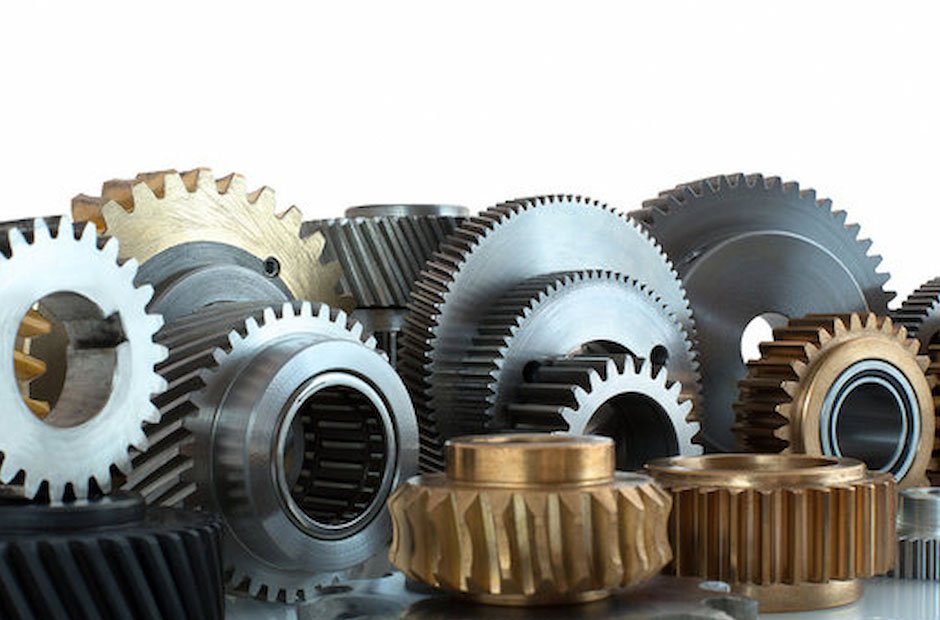Gears are the unsung heroes of the industrial world. These mechanical components, with their interlocking teeth, silently perform the intricate task of transferring power from one rotating shaft to another. Whether in a simple clock or a massive industrial machine, gears are at the heart of countless mechanical systems, ensuring smooth and efficient operation. But not all gears are created equal. Some applications require gears that are precisely tailored to their unique needs, and that’s where custom gear manufacturing comes into play. In this article, we will delve into the fascinating world of custom gear manufacturing, where precision is not just a goal; it’s an art form.
The Basics of Gear Manufacturing
Before we dive into the world of custom gears, it’s essential to understand the fundamentals of gear manufacturing. Gears are mechanical components with toothed wheels that mesh together to transmit motion and power. They can be found in a wide range of applications, from small household appliances to massive industrial machinery and vehicles.
The process of creating gears is known as gear manufacturing, and it involves various steps, from design to production. Gears come in various shapes and sizes, each designed for a specific purpose. Some common gear types include spur gears, helical gears, bevel gears, and worm gears, each with its unique characteristics and advantages.
Gear manufacturing typically starts with the design phase, where engineers carefully calculate the gear’s dimensions, tooth profiles, and other specifications. The design phase is crucial, as it determines the gear’s performance, efficiency, and durability.
Custom Gear Design
While off-the-shelf gears serve many purposes, certain applications demand gears that are tailor-made to meet specific requirements. This is where custom gear manufacturing shines. Custom gears are precisely designed to fit a particular machine or system, ensuring optimal performance.
The process of designing custom gears begins with a thorough understanding of the application’s needs. Engineers consider factors such as torque, speed, load, and operating conditions. These parameters influence the gear’s size, tooth profile, material, and manufacturing process.
One of the significant advantages of custom gear design is the ability to optimize performance. By tailoring the gear to the specific application, engineers can achieve higher efficiency, reduced wear and tear, and increased overall reliability. Whether it’s in a high-speed gearbox for a race car or a heavy-duty gear system for an industrial press, custom gear design ensures that the gears will function flawlessly.
Materials and Manufacturing Processes
To achieve precision in gear manufacturing, the choice of materials and manufacturing processes is of utmost importance. The materials used for gears should possess properties such as high strength, durability, and wear resistance. Common gear materials include steel, bronze, aluminum, and various alloys.
Manufacturing processes for gears can vary depending on the material and the desired gear type. Some of the commonly used processes in custom gear manufacturing include:
Hobbing:
Hobbing is a machining process that uses a specialized cutting tool called a hob to create the gear’s teeth. It is suitable for producing gears with excellent precision and surface finish.
Broaching:
Broaching is a technique that involves removing material progressively to form the gear teeth. It is often used for producing internal gears with complex shapes.
Gear Machining:
Gear machining employs various techniques, such as milling and turning, to shape the gear. It is versatile and can be used for both custom and standard gear production.
Gear Shaping:
Gear shaping is a cutting process that creates gears with precise tooth profiles. It is particularly useful for producing gears with complex shapes or tight tolerances.
Tooth Grinding:
Tooth grinding is a precision process that ensures the exact tooth profile is achieved. It is often used to finish gears to extremely high tolerances.
The choice of material and manufacturing process depends on the gear’s intended use, size, and complexity. Custom gear manufacturers carefully select the most appropriate combination to achieve the desired level of precision and performance.
Precision in Gear Manufacturing
Precision is the hallmark of quality in gear manufacturing. The teeth of gears must mesh perfectly, with minimal clearance and minimal backlash. Any deviation from the intended dimensions can result in reduced efficiency, increased wear, and even catastrophic failures in machinery.
In gear manufacturing, precision is achieved through meticulous design, precise machining processes, and stringent quality control measures. The tooth profile, pitch, and concentricity are some of the critical dimensions that demand precision.
The importance of precision becomes even more apparent in high-performance applications. For example, in the aerospace industry, where safety is paramount, custom gears must meet exceptionally tight tolerances to ensure reliable operation. Any deviation can compromise the performance of aircraft systems, potentially endangering lives.
Quality Control and Testing
Ensuring the precision of custom gears requires rigorous quality control and testing. Quality control measures are implemented at various stages of the manufacturing process to detect and rectify any deviations from the design specifications.
Some of the quality control techniques used in gear manufacturing include:
Dimensional Inspection:
This involves measuring critical dimensions of the gears using precise instruments such as coordinate measuring machines (CMMs) and laser scanners.
Material Analysis:
Materials used for gears are tested for composition, hardness, and other properties to ensure they meet the required specifications.
Non-Destructive Testing (NDT):
NDT methods like ultrasonic testing and magnetic particle testing are employed to detect internal defects or flaws in the gears.
Gear Tooth Profile Inspection:
Gear tooth profiles are checked using dedicated equipment to verify their accuracy and conformity to design standards.
Load Testing:
Gears may undergo load testing to assess their performance under actual operating conditions.
Custom Gears in Industry
Custom gears find applications in a wide range of industries, from automotive and aerospace to manufacturing and robotics. Their adaptability and precision make them indispensable in systems where off-the-shelf gears cannot provide the required performance.
Aerospace:
In the aerospace industry, custom gears are used in critical components like landing gear systems, flight control mechanisms, and engine accessories. Precision and reliability are non-negotiable in this sector, making custom gears a natural choice.
Automotive:
Custom gears play a crucial role in automotive transmissions, ensuring smooth shifting and efficient power transfer. Racing teams often rely on custom gears to gain a competitive edge on the track.
Manufacturing:
Custom gears are used in various manufacturing processes, including metalworking, plastics, and paper production. They contribute to the efficiency and precision of machinery in these industries.
Robotics:
In robotics, where precision and accuracy are paramount, custom gears enable robots to perform intricate tasks with repeatability and reliability.
Medical Devices:
Custom gears are found in medical devices such as surgical robots and imaging equipment, where precise motion control is essential.
Renewable Energy:
Custom gears are used in wind turbines and solar tracking systems to optimize energy generation.
These examples showcase the versatility and significance of custom gears across industries. They are not just mechanical components; they are precision instruments that drive innovation and progress.
Innovations in Custom Gear Manufacturing
The field of custom gear manufacturing is continually evolving, driven by technological advancements and the demand for higher performance. Some notable innovations in custom gear manufacturing include:
Advanced Materials:
The development of new materials with enhanced properties, such as high-strength alloys and composite materials, allows for more durable and lightweight custom gears.
3D Printing:
Additive manufacturing, commonly known as 3D printing, has revolutionized custom gear production. It offers greater design flexibility and the ability to create complex, lightweight gears.
Computer-Aided Design (CAD) and Simulation:
CAD software and simulation tools enable engineers to design and test custom gears virtually, reducing the need for physical prototypes and speeding up the design process.
Digital Manufacturing:
Industry 4.0 technologies, including automation and data analytics, are being integrated into custom gear manufacturing processes to enhance efficiency and quality.
Miniaturization:
Advancements in miniaturization techniques have led to the production of custom gears for small-scale applications, such as medical devices and micro-robotics.
These innovations not only improve the performance of custom gears but also open up new possibilities for their use in various industries.
Challenges and Solutions
Despite the advancements in custom gear manufacturing, several challenges persist. These challenges include:
Complex Geometries:
Custom gears with intricate shapes and profiles require specialized manufacturing processes and tooling.
Cost Constraints:
Achieving precision can be costly, especially for small-scale production runs.
Material Selection:
Selecting the right material for custom gears can be challenging, as it involves balancing factors like strength, weight, and cost.
Environmental Impact:
The manufacturing of gears, like any industrial process, can have environmental implications. Finding sustainable solutions is an ongoing concern.
To address these challenges, custom gear manufacturers continually seek innovative solutions. Advances in manufacturing technologies, materials, and sustainability practices are helping mitigate these issues and drive the industry forward.
Sustainability and Custom Gear Manufacturing
In an era of increasing environmental awareness, sustainability is a significant consideration in gear manufacturing. While gears are essential for countless applications, their production can have an environmental impact, from resource consumption to waste generation.
Custom gear manufacturers are taking steps to minimize their environmental footprint. Some sustainable practices in custom gear manufacturing include:
Material Recycling:
Efforts to recycle and reuse materials reduce the demand for virgin resources and minimize waste.
Lean Manufacturing:
Implementing lean manufacturing principles helps minimize waste and improve efficiency, reducing energy consumption and emissions.
Eco-Friendly Lubrication:
Choosing environmentally friendly lubricants for gears reduces the environmental impact of gear operation.
Efficient Manufacturing Processes:
Optimizing manufacturing processes reduces energy consumption and emissions while improving overall efficiency.
Longevity and Durability:
Designing custom gears for long-term use minimizes the need for replacements, reducing waste.
Sustainability is not just a trend; it’s becoming an integral part of custom gear manufacturing, ensuring that precision and environmental responsibility can coexist.
Conclusion
Custom gear manufacturing is a field where precision is not just a goal; it’s an art form. The intricate design, meticulous manufacturing processes, and stringent quality control measures ensure that custom gears meet the most demanding requirements of various industries. Whether in aerospace, automotive, or robotics, custom gears play a vital role in driving progress and innovation.
As technology continues to advance and sustainability becomes a priority, the world of custom gear manufacturing will evolve further. Engineers and manufacturers will continue to push the boundaries of precision, efficiency, and sustainability, making custom gears an even more integral part of our increasingly complex and interconnected world.
So, the next time you encounter a machine or system that operates seamlessly, remember that behind the scenes, there’s a custom gear meticulously crafted to ensure the art of precision is achieved.
















